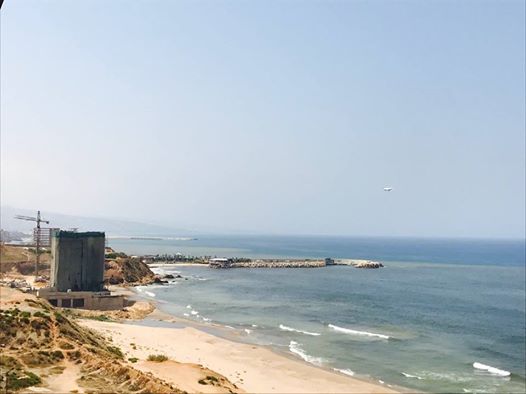On thursday 13th of july 2017, the municipality of Beirut decided to put Ramlet el baida beach under study, and more precisely the area from Summerland to Movempick hotel. This is the first real decision towards protecting the seafront in Beirut, in times where real estate developers consider the coastline an important opportunity for investment, leading to privatization of the only public beach and natural escape within the city.
What does this mean and why is this decision important?
By putting an area under study (in general for 2 years), the municipality freezes all transactions and construction projects within the chosen perimeter. The purpose of this procedure is to study a new masterplan for the area to meet the needs of citizens and the main concern would be protecting public interests. Practically, this means that starting today and for the upcoming two years, no new construction permit shall be delivered for any project on Ramlet el Baida beach as they need the approval of the Higher Council of Urban Planning (who is in charge of studying the new masterplan along with the municipality). However, all site works that were approved legally by permits before this decision shall continue.
Since the 1960s, urban regulations and laws allowed gradually, one amendment after the other, the occupation of the maritime public domain, considered however an exception by the law and not a generalised phenomenon like it is the case today. These exceptions granted by decrees, led to the privatization of the coast all over Lebanon, with investors banning people from free access to the beach, a right guaranteed by the law 144/S of 1925 which sets the definition of the maritime public domain. This right is also guaranteed by the autorization decrees themselves as they precise that “the holder of the permit must preserve the rights of others”, a condition never respected. Putting the beach area under study is important today because it is the first mandatory step in order to change the local zoning regulations affecting the area. If the municipality is serious about protecting the beach and giving it back to the city, the effective measure is to lower the exploitation ratio to 1% only. As per the urban planning law (1983), this would practically mean that construction is not allowed, but without having to pay indemnities for the owners (which is the case if the zone is specified as non-aedificandi). This is possible and rightful because it is driven by public interest’s requirements.
Is this decision enough to protect Beirut’s seafront?
As previously explained, this measure is only a step and the major concern now is the new masterplan that will be implemented, and that must take drastic directions towards protecting the beach. However, the municipal decision as taken today is an incomplete solution because it limits the area under study to ramlet el baida public beach only without including Dalieh and Raouche areas which are seriously endangered sites today and a prey for real estate developments. This is why, in order to be effective and put an end to the defiguration of our coast, the municipality should include the whole seafront area under study and put a new masterplan for all the coastal zone of the city.




More about Beirut municipality’s decision and press release ” target=”_blank” rel=”noopener”>here.

